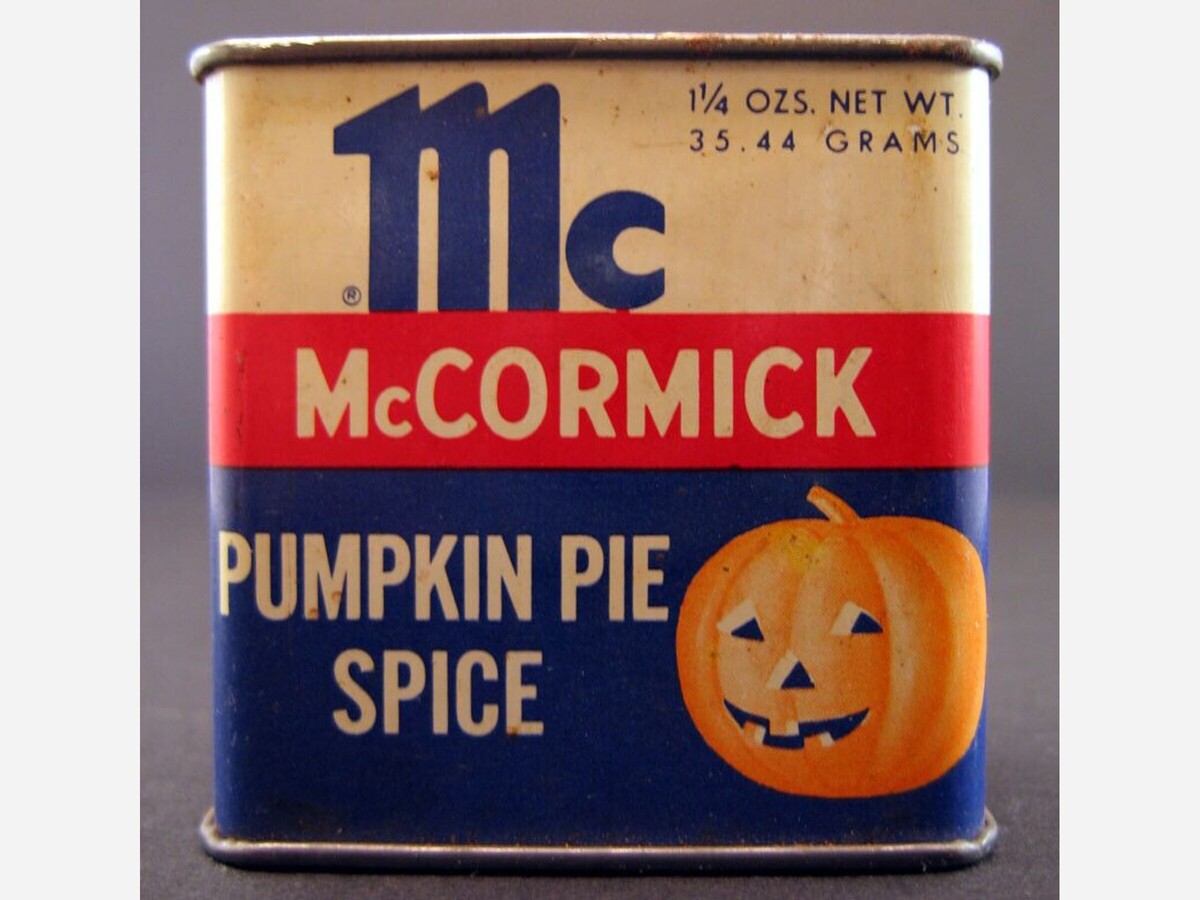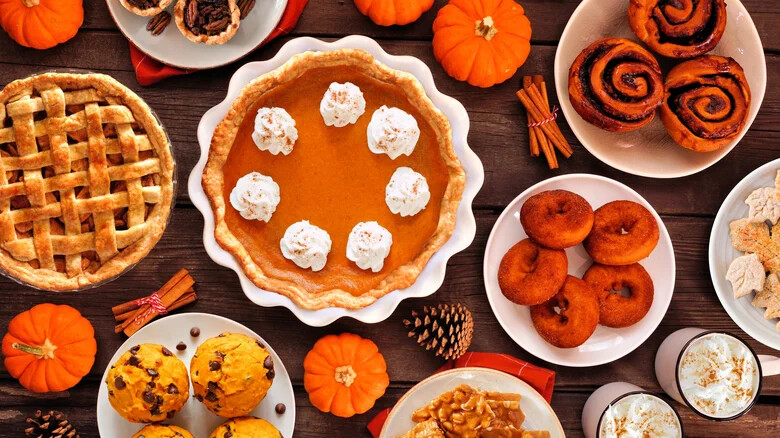Image

A Brief History Of Pumpkin Spice
Love it or hate it, pumpkin spice is a seasonal staple in the United States. Variations or imitations of the spice blend, which usually consists of nutmeg, clove, ginger, cinnamon, and sometimes allspice, can be found in lattes, coffee creamers, cookies, cream cheese, shampoo, hand wash, and beyond. Even before the first leaf changes color for fall, you can find pumpkin spice products dappled along grocery shelves. For something so seemingly ubiquitous, the popularity of pumpkin spice seems to be a rather modern phenomenon, originating right alongside the popularization of Starbucks' pumpkin spice latte (PSL for short) in the 2000s.
However, the history of pumpkin spice goes far beyond the iconic seasonal latte. In fact, pumpkin spice is about as entrenched in American history as apple pie (maybe even more so), and dates back to 1796, when the first documented recipe to include the spice combo was published. However, it wasn't until 1934 that the spice mix got its name. In the following decades, the now-named spice mix became a staple on the shelves of many home cooks. So it seems that pumpkin spice goes beyond the millennial craze for autumnal delights to which it is so often tied. It seems that the United States has always been pumpkin spice obsessed.
As American as pumpkin pie

Pumpkin spice is a key factor in American history. No, really, it is. In 1667 the Dutch sold the island of Manhattan to the English in order to purchase the island of Run, which is located in modern-day Indonesia. This island was known as a growing location for nutmeg, a very lucrative spice. But the impact of pumpkin spice comes down to more than just land trade. Spices such as cinnamon and nutmeg were incredibly popular in colonial America, especially among the wealthy.
In fact, the now-iconic pumpkin spice blend can be found in the first ever American cookbook. The book, written by Amelia Simmons, was published in 1796. Titled "American Cookery", the book included a recipe for "Pompkin Pie". The recipe called for ginger, nutmeg, and allspice. And though the recipe doesn't exactly resemble the current iteration of this classic dessert, it is clear that the love of pumpkin (and pumpkin spice) runs deep in American history. This only makes sense considering that scientists believe pumpkin to be native to North and Central America.

Now, the term pumpkin spice, or pumpkin pie spice, didn't come to be until McCormick, a spice company out of Baltimore, Maryland, introduced their prepared pumpkin pie spice in 1934. The spice consists of cinnamon, ginger, nutmeg, and allspice. The spice mix has become a staple in American kitchens, and by the 1990s, the spice mix had moved from the spice rack to the coffee counter. And pumpkin spice as the world knew it would never be the same.
How exactly did pumpkin spice go from baking essential to coffee flavoring? It appears to have started in 1996, when a coffee roaster in Tampa Bay, Florida, began roasting pumpkin spice beans. By 1998, pumpkin spice coffee could be found in locations such as Nevada and Pennsylvania. However, it wasn't until 2003 that the Starbucks pumpkin spice latte was first introduced.
The story starts in the spring of that year, when Starbucks tasked employee Peter Dukes with coming up with a fall-themed seasonal beverage. This was just after the 2002 holiday season, when the peppermint mocha (Starbucks' first majorly successful seasonal beverage) took the country by storm. Peter Dukes and his team worked on many ideas for a seasonal drink, but ultimately came down to 10 drink ideas, one of which was pumpkin spice.
In an interview with Food Network Canada, Dukes noted that, at the time, "nothing pumpkin existed in the marketplace." However, once Dukes and his crew perfected the recipe, they found that the pumpkin spice latte was a hit with its two test markets in Washington, D.C. and Vancouver. So in the fall of 2003, the pumpkin spice latte was born. And the rest, they say, is history.